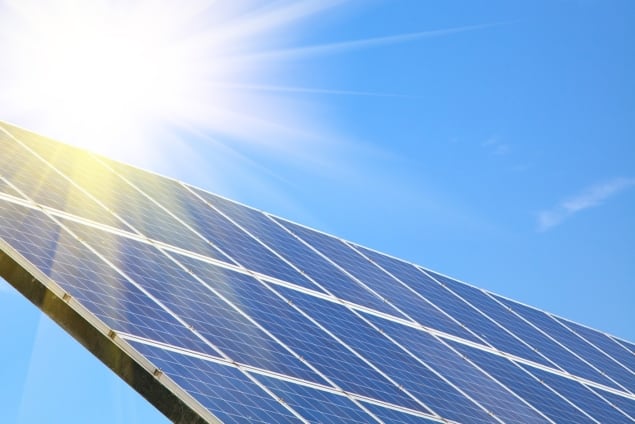
Placing large-scale solar farms on the Arabian Red Sea coastal plain could dramatically increase rainfall in this arid part of the world, a new modelling study claims. According to the researchers, simulations show that such installations could change the reflectiveness of the land enough to unsettle coastal air circulation. The resulting changes in local weather patterns and rainfall could potentially produce enough water to meet the annual needs of five million people. Although idealized, the team says its research points to the feasibility of freshwater recovery from sea breezes by land surface geoengineering.
As the world warms, water security is becoming a major concern. This is a particular issue in hot, arid parts of the world like the Middle East. Many countries in this area, such as Saudi Arabia, are in the middle of a water crisis. They have little rainfall and are exhausting underground aquifers. Water desalination is already widely used to increase freshwater supplies, but current methods are unsustainable due their high energy use. Desalination also unlikely to be able to meet future water demands.
There is increasing interest in the idea of artificially increasing rainfall over the Arabian Peninsula, using techniques such as cloud seeding. There is a lot of water in the air in the region because the Red Sea loses 0.7 teratonne of water every year through evaporation. This is equivalent to nearly 8% of the mass of all water vapour in Earth’s atmosphere. On the Arabian Red Sea coast, sea breezes blow this water across the land, but little of it falls as rain. Instead, it is transported south towards the equator and the middle of the Indian ocean.
Changing albedo
Georgiy Stenchikov, an expert in climate and atmospheric modelling at King Abdullah University of Science and Technology in Saudi Arabia, and his colleagues wondered how changing surface albedo – the reflectiveness of the land – over the region would impact water transport and change rainfall patterns. The idea, Stenchikov told Physics World, is to try to utilize this vast natural freshwater resource by increasing precipitation.
In their latest work, published in the Journal of Hydrometeorology, Stenchikov and colleagues ran a series of numerical simulations in a regional weather research and forecasting model. They focused on three scenarios: extensive forest planting, increased albedo and decreased albedo.
The simulations show that afforestation and increased surface albedo along the Arabian Red Sea coastal plain would reduce rainfall. Sea breezes in the region are driven by the horizontal thermal contrast between land and sea. The warmer land and cooler sea create a pressure gradient that pushes moist sea air towards the land. The models show that afforestation and a more reflective surface cools the land, which dampens sea breezes and reduces the movement of water vapour from sea to land.
Strengthening sea breezes
Conversely, decreasing surface albedo would increase rainfall. It would warm the coastal region, strengthening sea breezes and increasing water vapour transport to the shore, the researchers found. The increase in convection currents over the land increases vertical mixing in the lower atmosphere, particularly of water vapour, the models show. This increases humidity, cloud formation, and instability and turbulence. “The basis for all this is increased water surface flux,” Stenchikov says.

Solar panels can heat the local urban environment, systematic review reveals
Solar panels are known to alter the surface energy balance by absorbing solar energy and heating up. The team found that a reduction in albedo that corresponds with the large-scale installation of solar panel plants would increase rainfall in the region by around 1.5 gigatonne in the dry summer season. This is linked to an almost doubling of wet days from July to September, compared with current conditions. Smaller reductions in albedo would also have significant impacts on the number of wet days and rainfall volumes.
Stenchikov says that this proof-of-concept study shows that the idea could work, but more analysis is needed. “We have to work further to try to optimize this scheme, looking at the sizes [of solar installations needed] and optimal distribution for this specific area,” he explains.
Stenchikov says that such schemes could in theory work in any coastal region with sea breezes. They will work best, he explains, in areas with strong sea breezes, high levels of evaporation from the sea and large water vapour fluxes.



